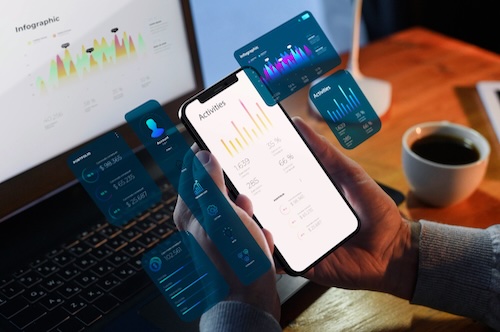Link-in-bio tools are evolving to become a buzzing, interactive hub of the creator’s digital presence, introducing features that rival the capabilities of full-fledged websites.
These tools have evolved from being only a storehouse of hyperlinks to being a creator's operating system, and data from the creator's social networks serve as fuel to make this operating system more useful.
Building a data bridge between social platforms and Link-in-bio tools
Despite the phenomenal growth of link-in-bio tools, there are concerns in the industry regarding the authenticity of a creator’s profile, engagement, and audience information - all of which can be addressed by having access to creator-consented data.
Creator Identity:
Social platforms have massive data about a creator’s reputation. Link-in-bio tools, on the other hand, have an identity problem as there is no verification that the person claiming to have a profile is actually the same person.
Authenticating the profile becomes important as some link-in-bio tools have enabled creators to add their affiliate links and request their audience for tips/donations. Moving forward, these tools can help solve the lingering identity problem with a “verified” badge as Twitter and Instagram did with a blue tick.
Getting access to verified creator data from the source platform can help bridge the reputation gap.
Account Aggregation:
Most creators have a multi-platform presence, which means that they have to visit every platform individually to track a campaign’s performance and compare data. This comparison becomes difficult as different platforms measure engagement differently. Link-in-bio tools can help aggregate these metrics, normalize the performance data across platforms, and make it easier for creators to comprehend this data.
The creator can track what content is resonating the most with their audience with a comparative study.
Here too, for a link-in-bio tool to have access to creator’s data from social platforms makes tremendous sense.
Audience Engagement:
Link-in-bio pages get considerable traffic organically through search results or via creators’ social profiles. To ensure that the viewer does not immediately leave the platform by clicking on the desired link, it makes sense for the tool to make the pages more interactive with the creator’s featured/latest content, their Spotify playlist, available merchandise, etc.
For a viewer, engaging with mixed media facilitates content discoverability. For creators, this is helpful as it enables forging a deeper connection with their audience.
To enable this level of engagement, it’s crucial that these tools have continuous access to the creator’s data.
Solving for link-in-bio tools’ data needs
For creator-consented data, link-in-bio tools can use Phyllo API to power many useful features:
- Identity: Identity API verifies a user's identity and returns unique identifier information about the creator such as name, email id, etc. depending upon the source platform.
- Engagement: Engagement API gives you data about content created by a creator and the reputation of a creator from the source platform (e.g. subscribers, followers, etc).
- Audience: Audience APIs provide information about audience demographics (age-gender pairs, interests, state/country, etc.)
Some features that can be enabled with creator data:
✅ Verification badge for a creator
- Link-in-bio tools can use Phyllo to get creators to link their social accounts with the app. Once linked, using Phyllo Identity API, the app can seamlessly get the creator’s profile info such as username, followers, subscribers, display image, and more. They can display this creator info on the app and even provide badges of verification.

👍🏼 Dynamic content flow
- Link-in-bio tools can use Engagement API to feature any creator’s content from multiple platforms on a single page, thereby making a rich centralized profile feed. This helps the audience discover other avenues the creator is active on and helps retain viewers on the link-in-bio page for a longer time.

🛒 Enable easy commerce via the link-in-bio page
- Using Engagement API, link-in-bio tools can scan all the affiliate links that the creator has shared in the content description, and make a shopping button or shopfront of these products. This could help add enormous value to the creator’s earnings.

📈 Display unified analytics across platforms
- Link-in-bio tools may use Phyllo’s Engagement API to aggregate a creator’s campaign performance across platforms and show these metrics in a single dashboard, making it easier for the creator to compare performance data.

💼 Easy media-kit
- Using Phyllo APIs, link-in-bio tools can render a creator’s featured posts, campaign analytics, audience demographics, etc. Creators can easily export this data as a media kit and share it with brands or influencer marketing agencies on request.
These are some ideas for innovation that link-in-bio tools may introduce to their creators. Using Phyllo, creator-consented data could be used to initiate multiple other features as shown in this video.









